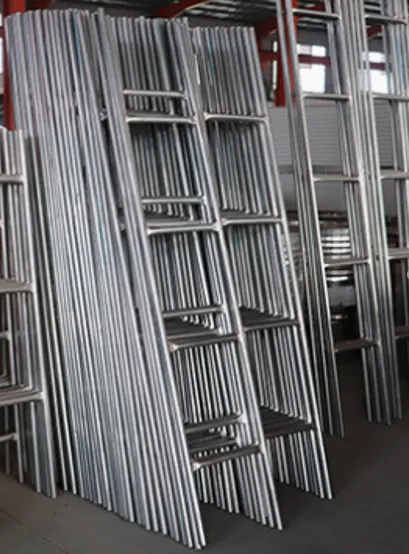loading...
- No. 9, Xingyuan South Street, Dongwaihuan Road, Zaoqiang County, Hengshui, Hebei, China
- admin@zjcomposites.com
- +86 15097380338
- Welcome to visit our website!
frp guardrail
Understanding frp guardrail An Overview
In today's rapidly evolving industrial landscape, the need for safety and efficiency in various sectors has become paramount. One of the critical components of this safety landscape is the use of guardrails, particularly in the context of Fiber Reinforced Polymer (FRP) guardrails. These structures are increasingly recognized for their effectiveness in ensuring safety and enhancing operational efficiency, especially in high-risk environments.
What are FRP Guardrails?
FRP guardrails are safety barriers made of fiber-reinforced polymers—a composite material that combines a polymer matrix with fibers. The fibers are typically made of glass, carbon, or aramid, which provide exceptional strength and durability to the material. The lightweight nature of FRP combined with its high strength-to-weight ratio makes it an ideal choice for guardrail applications in various settings, such as highways, industrial facilities, bridges, and railways.
Benefits of FRP Guardrails
1. Corrosion Resistance One of the most significant advantages of FRP guardrails is their resistance to corrosion. Unlike traditional steel guardrails, which can rust and deteriorate over time, FRP materials maintain their integrity even in harsh environments, such as coastal areas where salt exposure is constant. This property extends the lifespan of the guardrails, reducing maintenance costs and the need for frequent replacements.
2. Lightweight and Easy Installation The lightweight nature of FRP guardrails makes them easier to transport and install. This reduction in weight does not compromise strength; in fact, many FRP guardrails can withstand considerable impact forces while being much lighter than their metal counterparts. This ease of installation can lead to reduced labor costs and shorter project timelines.
3. Design Flexibility FRP materials can be molded into various shapes and forms, allowing for innovative and aesthetically pleasing designs. This flexibility enables engineers and architects to meet specific project requirements without sacrificing safety. The ability to customize guardrails can enhance the visual appeal of a site while still adhering to rigorous safety standards.
frp guardrail

4. Non-Conductive Properties For applications in electrical or electronic environments, the non-conductive nature of FRP guardrails can provide an additional safety layer. As these guardrails do not conduct electricity, they can minimize the risk of electric shock or other electrical hazards in areas where power lines are present.
5. Environmental Considerations FRP materials can also be manufactured using recycled fibers, making them an environmentally friendly option. Their long lifecycle and reduced need for maintenance further contribute to their sustainability.
Applications of FRP Guardrails
FRP guardrails can be utilized in a variety of settings, demonstrating versatility across multiple industries. Some common applications include
- Transportation Infrastructure On highways and bridges, FRP guardrails provide essential protection for vehicles and pedestrians alike. Their durability ensures they can withstand the repetitive stress of traffic and weather. - Industrial Sites In manufacturing facilities, particularly those that handle chemicals or hazardous materials, FRP guardrails can safeguard against spills and accidents, creating a safer workplace environment. - Marine Environments In coastal regions, where exposure to saltwater can degrade traditional materials, FRP guardrails provide a reliable solution with their corrosion resistance.
- Railways and Transit FRP guardrails are also employed in railway applications, protecting train passengers and property at crossings and stations.
Conclusion
In conclusion, FRP guardrails represent a significant advancement in safety technology, combining strength, durability, and flexibility in a lightweight package. The numerous benefits and applications of these materials make them an attractive option for industries prioritizing safety and efficiency. As we move toward a more safety-conscious future, the integration of innovative solutions like FRP guardrails will play a crucial role in protecting lives and enhancing operational effectiveness. Whether in transportation infrastructure, industrial settings, or public spaces, the implementation of FRP guardrails will undoubtedly contribute to safer environments for all.
-
GRP Structures: The Future of Lightweight, High-Performance EngineeringNewsJun.20,2025
-
FRP Water Tank: High-Performance Storage for Corrosive and Clean Water SystemsNewsJun.20,2025
-
FRP Square Tube: The New Industry Standard for Chemical and Structural ApplicationsNewsJun.20,2025
-
FRP Pultruded Profiles: The Ultimate Choice for Lightweight Structural StrengthNewsJun.20,2025
-
FRP Handrails: The Safer, Smarter, and Stronger Choice for Modern InfrastructureNewsJun.20,2025
-
FRP Grating: The Smart Solution for Durable, Lightweight Industrial FlooringNewsJun.20,2025
-
Why Choose a Galvanized Water Tank for Your Storage NeedsNewsMay.21,2025
